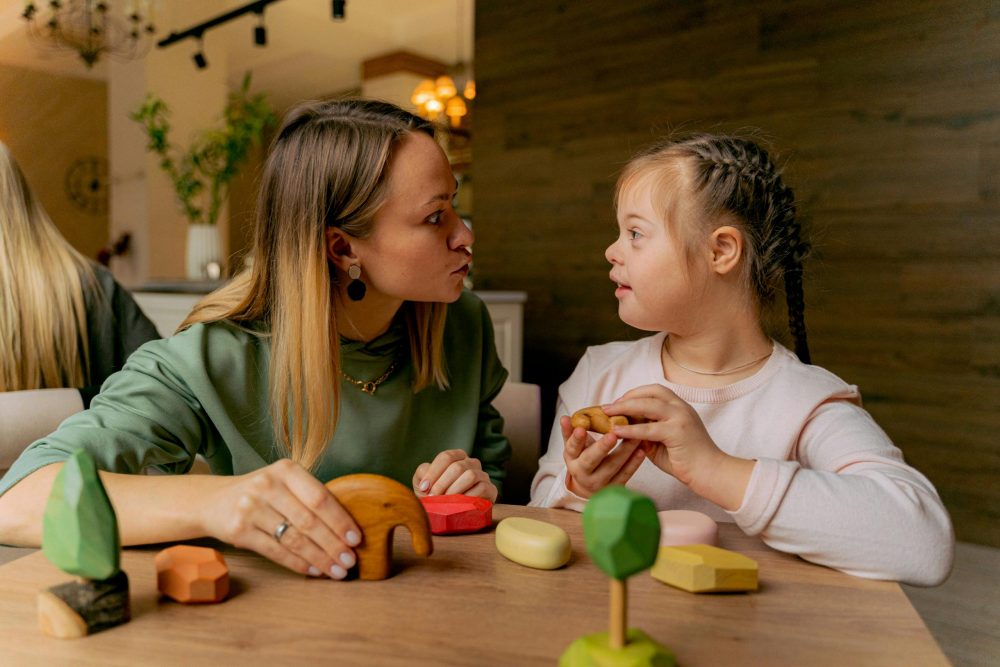
Every child needs to be given an opportunity to grow, learn, and become part of his or her society. For children with Autism Spectrum Disorder (ASD) diagnosis, this is often a process that calls for one-on-one training and attention. Home ABA therapy—Home Applied Behavior Analysis—is an evidence-based, humane method of making great gains. Increasing numbers of Chicago parents opt for in-home ABA therapy to encourage emotional, social, communication, and behavioral development in children, confidence, and autonomy.
ABA therapy is learned science. It involves positive reinforcement of desired behavior and elimination of barriers that can interfere with social interaction or learning. When performed at home, ABA therapy gives children a peaceful, relaxed environment where they can learn normally and systematically.
Here, we address how Chicago In-home ABA therapy encourages development in key areas of development — communication and social skill to motor development, self-help, flexibility, and more.
Social Skills Development
Social interaction is the basis for relationships and integration into society. Most children with autism have a hard time understanding social cues, sharing, cooperating, or group play. Therapists replicate daily social interactions—such as eating with the family, playing, or coping with siblings—in-home ABA therapy in an attempt to teach social skills in real-life situations.
By greeting others, eye contact, or understanding feelings, children learn the style of relating. These are reinforced with encouraging feedback, and they establish peer relationships and social competence. Parents are also taught to reinforce such interactions every day.
Communication Skills
Effective communication is also necessary in the communication of needs, empathy, and forming emotional attachments. In-home ABA therapy tackles verbal and nonverbal communication separately. For verbal children, therapists are in a position to offer clearer speech and greater vocabulary by the use of modeling and repetition. Therapists can introduce nonverbal children to the use of visual aids, picture exchange systems (PECS), or speech-generating devices.
By operating within the home setting, therapists are able to make language objectives incidental to everyday routines—such as requesting a toy, responding to questions, or complying with instructions. This allows children to readily generalize communications to a range of contexts.
Self-Help and Daily Living Skills
Independence is the start of self-help skills for everyday living. Home ABA therapy teaches children the day-to-day life skills of dressing, brushing, spooning, toileting, and handling belongings. Therapists divide these activities into manageable steps that can be described and support each step to guarantee success.
In actual application within the natural environment, children are made proficient and at ease with the execution of daily routines. Parents are also trained in good practice in consistency and go out of their way to assist in creating gains over the long term.
Motor Skill Development
Motor skills are important to coordination, play, and school readiness. Some youngsters with autism may struggle with fine motor skills (such as handwriting or buttoning) and gross motor skills (such as running, jumping, or balance). ABA therapists help children achieve motor control and coordination through playful, interactive activities—such as block-stacking, drawing, or throwing a ball.
With home ABA therapy, kids also get the chance to rehearse abilities within the comfort of their own residence. This benefits physical functioning and self-esteem, while school and play integration is optimized.
Flexibility and Adaptability
The majority of autistic kids are not fond of change and become upset or rigid regarding novelty. Home ABA therapy gradually implements flexibility training, allowing children to accommodate transitions, surprises, or new routines. Strategies include gradual exposure, use of visual schedules, and role-playing to make kids resistant to change without getting upset.
They also collaborate with parents in developing predictable yet flexible environments that mix predictability with diversity—teaching children about the varied activities of life.
Play Skills
Play is not amusement—it’s a child’s means of learning, fantasizing, and relating. ABA therapists use play-based interventions to teach children about sharing, imagination, and cooperation. Play is used as a tool that generates cognitive and emotional growth with in-home ABA therapy.
By guided play sessions, children acquire social turn-taking, creativity and problem-solving. It is also open to parents to join them, creating a shared learning experience that solidifies family bonding.
Attention and Focus
Sustained attention is most likely not going to be easy for the majority of autism spectrum children, particularly learning or being in a group. Home ABA therapy is utilized to build attention span with focused exercises meant to help a child focus more. Therapists lead children towards sustained attention, and gradually achieving it, they increase how long a child is able to sustain attention.
By being able to work within a home comfort environment—distraction free of new and unaccustomed environments—children learn how to use and manage attention properly, which makes them more school ready and better learnable overall.
Developmental and Academic Development
Behavior management is also among the foundations of ABA therapy. Home-based sessions involve learning about why hard-to-manage behavior happens and practicing evidence-based practices to facilitate positive replacements. Positive reinforcement, token systems, and clear structure are strategies utilized in reducing tantrums, aggression, or avoidance behavior.
Additionally, educational reading, writing, and math skills are incorporated into the therapy as recommended. By combining behavior goals with academic success, children are aided as a learner in the home and school environment.
Sensory Processing Support
Sensory hypersensitivities—under- or overreactions to lights, textures, or sounds—are common in most children with autism. Home ABA therapy avoids these difficulties by instructing coping strategies and desensitization procedures. Therapists, for example, can utilize progressive exposure to sound or texture within a supportive environment.
The goal is to ensure regulation of sensory reactions in children, enhancing comfort and attention throughout the course of the daily day. In the long term, the support guarantees school attendance, social interaction, and activity in and about Chicago city.
Why In-Home ABA Therapy in Chicago?
Chicago children can benefit significantly from home ABA therapy since it offers professional service and convenience at home. Familiarity with the home setting enables practice at home, minimizes stress, and enables children to implement naturally the skills they have learned. Parents are also being trained as co-therapists simultaneously—receiving hands-on training and guidance from certified ABA professionals.
This teamwork yields long-term dividends that enable children to thrive not just in traditional therapy but in life. From friendship and living skills to supporting learning and confidence, in-home ABA therapy is family-centered, full-service autism therapy for kids.
Conclusion
Chicago in-home ABA therapy allows children to prepare to achieve their highest possible level by developing social, emotional, and behavior areas. Highly structured assistance to daily activities and routine-like activities allows children to develop effective communication, behavior control, independence, and meaningful relationships.
By strengthening all the areas—social, communication, self-help, motor, flexibility, play, attention, behavioral, academic, and sensory processing—in-home ABA therapy lays a solid foundation for future achievement. Each positive step in the right direction at home is a brighter, more confident tomorrow for your child.







